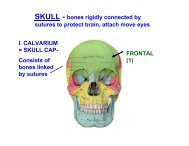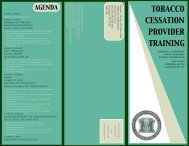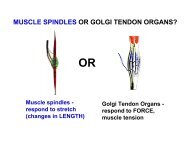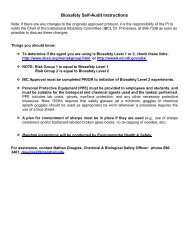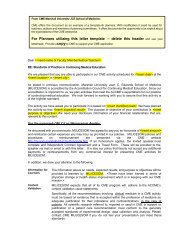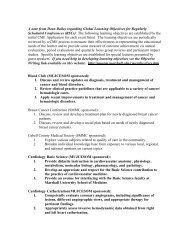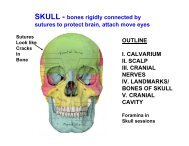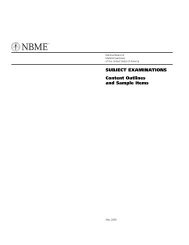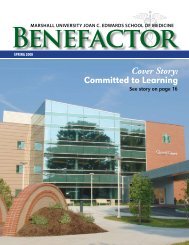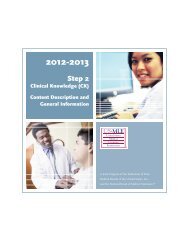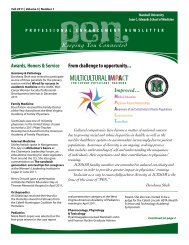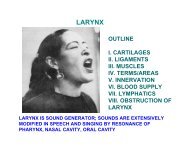FA 5 Progress Report WV-INBRE - Joan C. Edwards School of ...
FA 5 Progress Report WV-INBRE - Joan C. Edwards School of ...
FA 5 Progress Report WV-INBRE - Joan C. Edwards School of ...
- No tags were found...
You also want an ePaper? Increase the reach of your titles
YUMPU automatically turns print PDFs into web optimized ePapers that Google loves.
Program Director/Principal Investigator (Last, First, Middle): Rankin, Gary O 119members and apply a stepwise filtering process to identify variants that are most likely to confersusceptibility to the disease. From those families that have no deleterious LDLR mutations in affectedmembers, he will then select affected individuals for whole exome sequencing. Once this stage is completed,Dr. Primerano will confirm the significance <strong>of</strong> these variants by showing that these variants are present inother affected family members and that they are largely absent from unaffected relatives. This confirmatorysequencing will be limited to the variant sequence and ~200bp <strong>of</strong> flanking sequence and can therefore beeffectively conducted on all affected and normal persons from the FCH families; currently there are 80affected individuals and 92 normals based on the phenotype algorithm. In this fashion, he will eliminatecoincident variants and focus on the remainder for biological relevance to FCH. Also, by expandingsequencing to unrelated affected members he can test for allelic and locus heterogeneity.To date, Dr. Primerano has successfully sequenced the whole exomes <strong>of</strong> 41 individuals and tested a variantdiscovery strategy on one FCH Family (1150027). His strategy at a 15% allele frequency cut<strong>of</strong>f reduced thenumber <strong>of</strong> possible variants to 70 which 45 correspond to known genes. He has reviewed the functions <strong>of</strong>genes from variants which result in missense or possible changes in conserved splice sites. The missensemutations correspond to uncharacterized open reading frames on chromosomes 1 and 17. Severity <strong>of</strong> thesemissense mutations and potential biological function <strong>of</strong> these ORFs must be assessed. One variant in theATP-citrate lyase (ACLY) gene is located near a splice donor site. This enzyme catalyzes the formation <strong>of</strong>acetyl-CoA and oxaloacetate from citrate and CoA with a concomitant hydrolysis <strong>of</strong> ATP to ADP andphosphate. The product, acetyl-CoA, serves several important biosynthetic pathways, including lipogenesisand cholesterogenesis. ACLY expression and activity is known to be suppressed by exogenous lipids(GeneCard database). Although effect <strong>of</strong> this mutation on ACLY mRNA splicing is unknown, ACLY may playa role in regulating the abundance <strong>of</strong> serum cholesterol and triglycerides. NoSNP or indel variants mapped to the 3 known Familial Hypercholesterolemia and 3 known FCH genes. Thisreduces the likelihood that defects in these genes could be the cause <strong>of</strong> FCH in Family 11502 but does noteliminate it completely since deleterious mutations may be located in non-exonic regions <strong>of</strong> these genes. Amore rigorous analysis <strong>of</strong> variants from all FCH families is under way.In Y11, two additional ACoRN pilot projects were funded. One project was entitled “Monitoring geneexpression post-stroke to predict stroke outcome” (Taura Barr PhD RN <strong>School</strong> <strong>of</strong> Nursing and Center forNeuroscience, West Virginia University) and the second project is “Regulation <strong>of</strong> brain endothelialphenotype and function by diabetic plasma” (Richard Egleton, PhD, Department <strong>of</strong> Pharmacology,Physiology and Toxicology, Marshall University). These projects are making good progress toward theirresearch goals. Both investigators have presented their work as poster or platform presentations. Dr. Barrhas submitted a manuscript entitled “Identification <strong>of</strong> a genomic pr<strong>of</strong>ile following ischemic stroke that maymediate stroke recovery” that has been submitted to Science Translational Medicine. Dr. Barr’s proposalinvolves human subjects, and its IRB approval has been included in the appendix <strong>of</strong> the 2590 report. Dr.Egleton’s proposal involves animal studies and the corresponding IACUC approval has been included in the2590 appendix. Inclusion <strong>of</strong> these projects as part <strong>of</strong> ACoRN was approved by the <strong>WV</strong>-<strong>INBRE</strong>, EAC andDr. Krishan Arora at the NCRR early in 2011.Summer Research ProgramSixty-eight students from the PUIs applied for the Summer Research Program in Y11. Twenty-twostudents were accepted with eleven conducting research at MU and eleven at <strong>WV</strong>U under the mentorship<strong>of</strong> faculty at the lead institutions. The program was concluded on July 28, 2011 with a Summer ResearchSymposium held at MU. Dr. Terrence J. Monks, Pr<strong>of</strong>essor and Chair <strong>of</strong> Pharmacology and Toxicology,College <strong>of</strong> Pharmacy, University <strong>of</strong> Arizona Health Sciences Center was the keynote speaker. Studentsand faculty from the Summer Program, PIs holding major PUI research awards, F RDA recipients, andstudents and high school teachers supported by the <strong>WV</strong>-<strong>INBRE</strong>--HSTA initiative made a total <strong>of</strong> 56 posterand 6 oral presentations. In the fall <strong>of</strong> 2011, the 2012 Summer Research Program was promoted at all<strong>WV</strong>-<strong>INBRE</strong> partner institutions through presentations or through announcements mailed to the institutions.For the 2012 program, a Mentors Directory listing prospective research mentors and available projects forthe summer research program, as well as application forms for the summer student internship and facultyPHS 2590 (Rev. 06/09)Continuation Format Page



